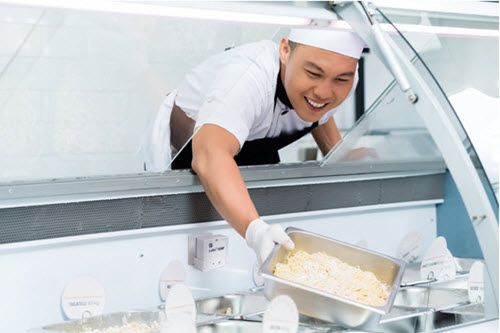Automated Temp Monitoring Goes Long
Posted on 25th Mar 2021
 Since the onset of COVID-19, ensuring the safety of both customers and employees has become the top priority for retail foodservice operators.
Since the onset of COVID-19, ensuring the safety of both customers and employees has become the top priority for retail foodservice operators.
While new protocols for protecting staff and customers, maintaining products that meet customers’ changing buying habits and keeping pace with new technology all compete for attention, one issue remains a priority just as it did pre-pandemic: temperature monitoring. Improper food temperatures are consistently cited as one of the most common food safety violations and, with the increased emphasis on food safety, preparation and storage at c-stores have become much more involved—and a much greater safety risk.
Emerging technologies are introducing solutions to daily responsibilities that challenge c-store operators, such food prep tasks and tracking received shipments, but temperature monitoring presents its own set of challenges. Operators of stores with a larger footprint or with a large amount of equipment (such as coolers and freezers) have found that these aspects inhibit the way individual components of automated temp monitoring systems communicate with one another.
LoRa to the Rescue
Temperature monitoring solutions using LoRa technology, however, increase efficiencies and improve good practices by allowing for longer-range communication between system components.
Systems that utilize this long-range technology, such as The DayMark Temp Monitoring and Food Check Solution, allow for more efficient tracking of temperature, humidity and other environmental factors. LoRa is especially useful in large-format locations that see heavy foot traffic and other obstacles scattered across the store.
“The LoRa technology gives the system the ability to customize its frequency in order to best send messaging and avoid obstacles” says AJ Haas, category manager of food safety tech at DayMark. “This provides for more reliable results and the increased flexibility that larger footprint operations—such as c-stores—need.”
Goodbye Handwritten Logs
In the past, monitoring temperatures was tedious and sometimes ineffective as staff manually checked and recorded temperatures in a handwritten log.
The DayMark solution, powered by JRI and available as part of DayMark’s MenuCommand kitchen automation platform, includes wireless sensors, a gateway for Internet connectivity and a web-based dashboard for managing the data. Accessing real time performance data to address potential food safety issues such as equipment downtime or refrigerant leaks can also reduce maintenance costs and result in better energy efficiency.
In other words, with automated temp monitoring, handwritten logs become a thing of the past.
Data collected by the temperature data loggers and sensors can be managed on a monitoring web platform using a PC, a tablet or even a smartphone. If tolerance thresholds are exceeded, alerts are issued immediately.
Deploying this technology in c-store management creates intangible benefits for customers. Investing in a wirelessly-connected infrastructure that maintains food safety and freshness—and can navigate large spaces and obstacles—helps customers get the most out of their experience and keeps them coming back.
Article originally appeared on the CSP website.


